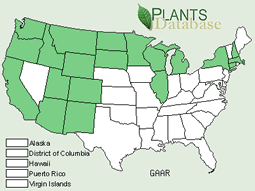Featured Plant: Torrey’s Rush- Juncus torreyi
- Christine Lawson

- Aug 22, 2021
- 3 min read
Looking for a native plant that can grow well in wet areas? Check out the adaptable and adorable Juncus torreyi - Torrey’s rush. Torrey’s rush is a common species that can be found growing wild in temperate settings across the continental United States (excluding Alaska) and in the southern provinces of Canada. This grass-like species is common in riparian areas and is an ideal species for wetlands, wet meadows, pond or lake margins, swamps and along riverbanks. This long-lived perennial can grow at elevations up to around 9,000 feet and is an ideal choice for landscaping and riparian restoration applications.
Torrey’s rush grows from about 5 inches to 1 ft. tall. Stems are thin, erect and somewhat wiry and often extend up above the inflorescences of the plant. Torrey’s rush foliage has a delicate look, but the plants make a bold statement with their inflorescences. The flowerheads of Torrey’s rush are a tight cluster of capsules that look like little starbursts. The seed capsules appear light green at first and mature into a dark brown by late summer or fall. Once mature, Torrey’s rush plants often take on a fountain-like appearance with many stems expanding from a clumped base. The plant's root system can be vast. Torrey’s rush are rhizomatous and can reproduce both vegetatively (sending up new shoots through its root system) or by seed.
Torrey’s rush can provide soil stabilization in wet soil environments, particularly along riverbanks and shorelines where moving water is likely to cause erosion without roots to bind the soil in place. Torrey’s rush can also quickly colonize disturbed wetland areas where competition is limited. Another adaptation that can make Torrey’s rush valuable in challenging growing environments is its tolerance of somewhat saline soils. The plant's rhizomatous root system, tolerance of wet soils, and long-lived nature make it an ideal choice for wetland restoration projects.
For the landscaper or gardener, Torrey’s rush can be a great option to plant along the margins of a backyard pond or in marshy areas. Planting this species is a great way to bring diversity to your own native riparian ecosystems and can add some beautiful, fine-texture green foliage to your landscape. Torrey’s rush can also provide interesting fall color and texture to a moist setting since the bristly, brown seedheads mature in late summer and fall. This species is easy to establish and care for if planted in the right setting.
Planting Notes
Plant in wet or moist soil. This species can tolerate standing water. Think wetlands, pond margins, stream banks, marshy or swampy ground or wet prairie.
Torrey’s rush is adapted to a variety of soils. You can plant it in sandy, loam, silt or clay soils.
Torrey’s rush prefers sunny locations but can tolerate some shade. For the best performance plant in full sun.
Torrey’s rush is a rhizomatous species, meaning it will spread on its own from its root system. Consider giving these plants room to expand overtime, and be aware that you might need to remove unwanted seedlings from unoccupied garden space. Catch them while they are small! You can also plant this species in large containers if you are able to keep the soil moist.
Remove old, yellow stems in the early winter.
The entire plant can be cut back to about 2 inches tall to help rejuvenate the plant on a yearly basis. Cut back plants in late fall or early spring (outside of the plant’s growing season).
Planting Buddies
Milkweed (Asclepias spp.)
Bluejoint reedgrass (Calamagrostis canadensis)
Water sedge (Carex aquatilis)
Small-wing sedge (Carex microptera)
Beaked sedge (Carex utriculata)
Common spikerush (Eleocharis palustris)
Mannagrass (Glyceria spp.)
Sweetgrass (Hierochloe odorata)
Rocky Mountain iris (Iris missouriensis)
Monkey-flower (Mimulus spp.)
Sources:















Comments